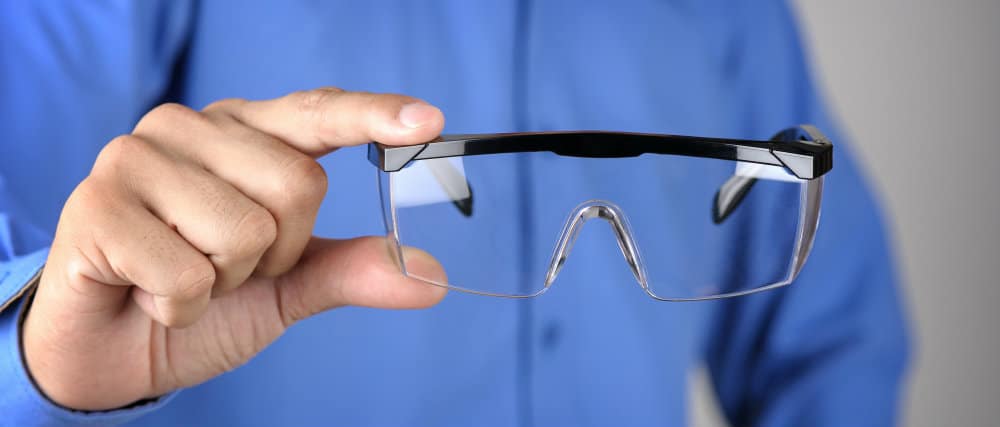Eye Safety in Your Workplace
The sad fact of the matter is this:
Eye injuries in the workplace are extremely common.
According to the National Institute for Occupational Safety and Health, an average of 2,000 U.S. workers require medical treatment for job-related eye injuries every day. That’s almost 750,000 people per year!
Clearly, this is a big problem.
Fortunately, it’s not a completely unavoidable problem. Many safety experts agree that proper eye protection can potentially prevent 9 out of 10 of those eye injuries (or at least reduce their severity).
This conclusion was likely reached by considering that there are two major reasons for workplace eye injuries:
 So what kinds of eye hazards can be found on a job site?
Naturally, this will depend on the specific circumstances for every respective job and work site, but some common examples of potential eye hazards include:
So what kinds of eye hazards can be found on a job site?
Naturally, this will depend on the specific circumstances for every respective job and work site, but some common examples of potential eye hazards include:
 If you have particles in an eye:
If you have particles in an eye:
- Employees not wearing eye protection.
- Employees wearing the wrong kind of protection.
 So what kinds of eye hazards can be found on a job site?
Naturally, this will depend on the specific circumstances for every respective job and work site, but some common examples of potential eye hazards include:
So what kinds of eye hazards can be found on a job site?
Naturally, this will depend on the specific circumstances for every respective job and work site, but some common examples of potential eye hazards include:
- Projectiles. When machines create particles—dust, wood, metal, concrete, etc.—to spray into the air, it’s an obvious situation where contaminants can affect eye health and safety.
- Chemicals. In these situations, chemical products are either a risk due to splashing or fumes. Often, eye protection will be part of a mask that also protects employees from breathing in harmful chemicals.
- Radiation. Light is important in many different regards, but it can also be potentially harmful to eye health as well. Ultraviolet radiation, lasers, and infrared radiation are particularly concerning.
- Bloodborne pathogens. Your eye tissues are mucous membranes, which means they can enable pathogens found in blood and body fluids to potentially enter the body, thereby creating health problems.
- Being aware of the eye safety dangers in your job, and bringing them to management attention (if they aren’t already aware of potential risks).
- Addressing possible eye hazards before starting your work for the day (such as by making sure you have guards and screens in place).
- Actually wearing your eye protection—since safety glasses aren’t particularly helpful sitting on a work bench or hanging out in your locker.
- Keeping your eye protection in good condition and replacing it if there’s any damage or impaired functionality.
 If you have particles in an eye:
If you have particles in an eye:
- Avoid the temptation to rub your eye. Doing so can push a foreign object further in or scrape valuable eye tissues.
- Irrigate your eye with tear drops. If you don’t have artificial tear solution handy, your natural tears may be able to wash the speck out.
- In some instances, you might be able to remove the particle by lifting your upper eyelid outward slightly and then down.
- In the event you cannot get the particle to wash out, keep your eye closed, bandage it lightly, and seek professional medical care.
- Do not wash out your eye or attempt to remove an object stuck in it.
- Cover your eye with a makeshift shield that is rigid, such as the bottom half of a paper cup.
- Seek immediate medical care.
- Without putting pressure on your eye, gently apply a cold compress (like a plastic bag filled with crushed ice) to relieve pain and reduce swelling.
- Seek immediate medical care if you have reduced vision or severe pain.
- Immediately flush your contaminated eye(s) with running water from a faucet, shower, or garden hose—or continually pour water into your eye from a clean container (if you don’t have better options)—for at least 15 minutes.
- If you wear contacts, remove them as soon as you can can after initially flushing the eye. (They may have actually come out on their own during the flushing process. )
- Do not try to neutralize the chemical with other substances or bandage the affected eye.
- After flushing with water, seek immediate medical care.
